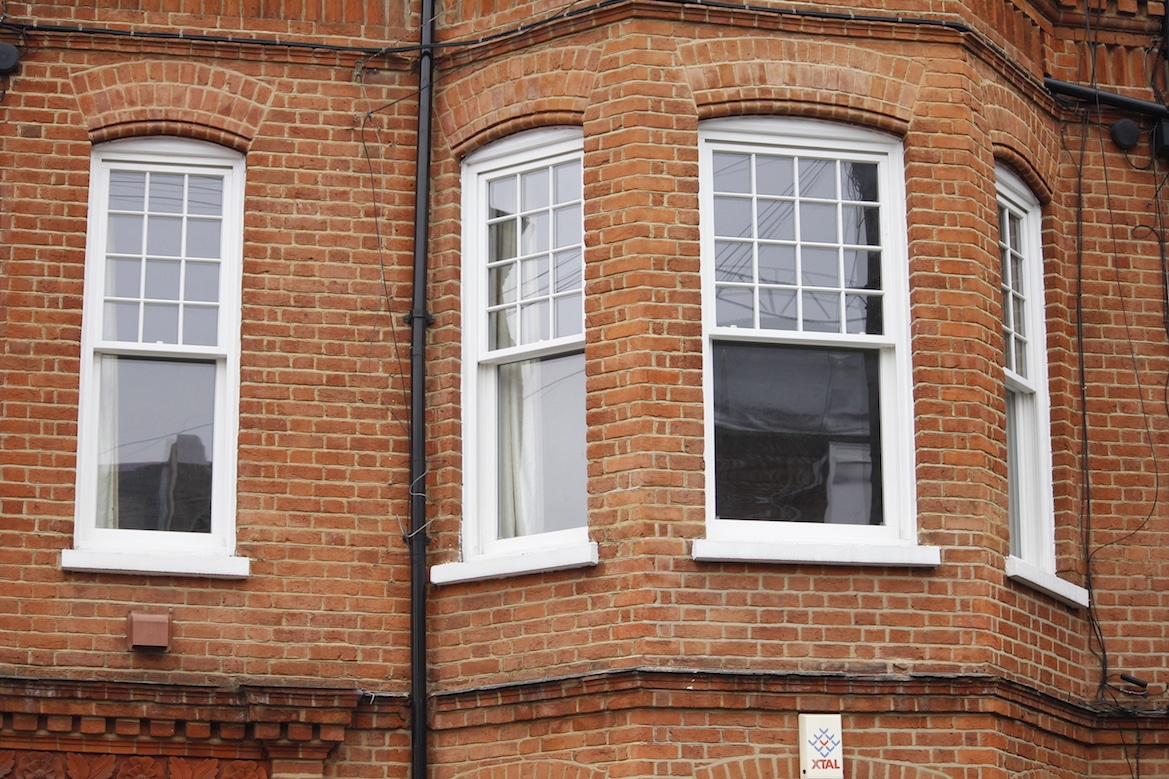There is a very good reason why wood sash windows haven’t gone out of fashion for over 300 years; their design is timeless. Whether you live in a period property or a stylish modern apartment, maintaining your sliding sash windows can keep your property looking ageless. Similar to fireplaces, your sash windows are an integral part of your properties character. Given the proper care and attention, sash windows can survive for hundreds of years.
However, from time to time, your sash windows might need a bit of a spruce up to make sure they’re looking their best. But, let’s be honest, we all need that now and again! One of the prices to pay for having such a traditional and character rich window style is that a bit of light maintenance is required now and again, but it is really easy if you keep on top of it.
Below you will find our top ten tips for maintaining your sash windows, helping you keep that traditional feel to your home without losing out on the efficiency.
1. Keep your windows clean
If you’re using paper towels to wipe the glass, you’re doing it wrong. All you are doing is moving the dirt around on the window pane while simultaneously creating static on the glass, which only attracts more dust and dirt. The best way to clean your windows is by using glass cleaner and a microfiber cloth. This method of cleaning also helps the environment as it doesn’t lead to lots of dirty paper towels going into your waste bin.
Ideally, the external window panes should be cleaned once or twice a year. It is best not to clean your windows on a sunny day as too much sun tends to dry the windows too quickly, leading to those unsightly streaks. Windows are wonderful for bringing light into the home but that is only a benefit if we can actually see through them!
2. Paint your windows regularly

Timber and sash case windows should be regularly painted in order to prevent deterioration of the timber and to help improve their appearance – always an added bonus! Ideally, you should re-paint your windows every 3 to 4 years in order to help protect your windows from the elements. Always be sure to clean your windows thoroughly before applying paint.
3. Stop your windows from sticking
One of the most common problems people encounter with sliding sash windows is that of sticking. Sash windows should glide smoothly up and down. The main reason for sticking is a messy paint job which will literally be sealing the window in place. If you discover paint on the window sills, or even on the window frame itself, simply run a knife or sharp object along the edge to free it.
Tip: Strip paint-encrusted hardware by giving it an overnight dip in a warm Crock-Pot filled with sudsy water.
4. Maintain your windows insulation
Up to 26% of heat is lost through poorly insulated windows. Gaps around your windows allow air to come in and encourage the loss of warm air from inside. This means higher energy costs for you, which is never good. One of the best ways to maintain your window insulation is by replacing the worn rubber seals which will help to reduce air and water leaks. It also has the added benefit of keeping the window in place. You can also use spray-form insulation to help seal your windows. Another option is to add shutters onto the windows, not only will this add security but it will also have the added benefit of a lowered energy bill.
5. Keep your windows safe
Additional locks can be inserted into the meeting rails and blocks or stops can be fitted to prevent sashes opening beyond the required height. This can also prevent accidental falls through the windows from inside, something every mother of young children worries about. Furthermore, sliding sash windows can be easily fitted with child safety restrictors which limit the opening distance of the window to make you and your family safe.
6. Oil windows for smooth operation
Keeping your windows oiled and working smoothly will help maintain them as well as reduce any back problems you may get from aggressively trying to free your window from its stuck position. Rubbing wax or oil into the frame, hinges and all interior and pulley features will also help the to ensure the window is loose enough to move smoothly and with ease. Silicone often works well for oiling a stuck window frame as it is colourless and doesn’t leave a sticky residue.
Tip: Be sure to wipe the window clean of any dust, dirt, and cobwebs, ensuring that it is dry before applying any sort of product.
7. Regularly check your windows for rot
One of the most common problems you can find with wooden sliding sash windows in the long term is, as with any outdoors wooden products, an issue with rot. The fungus thrives on wet wood, and the more it wears down the wood, the deeper the moisture can penetrate. As the rot works into the wood, it not only becomes unsightly – most commonly producing peeling paint and blackish blemishes – but also weakens the structural integrity of the wood. Ultimately, rotting wood can cause windows to leak.
As long as the rot damage is purely superficial, fixing this issue is no problem. Ensure you clean the area thoroughly with a damp cloth and remove any debris before applying a wood hardener. This wonderful product is a quick drying liquid formulated to strengthen and reinforce rotting or decaying wood. If the damage is more extensive then it is advisable that you have the entire sash window removed in order to chemically strip and sand down the remains so you can reuse the parts you wish to keep.
8. Reduce timber decay
For traditionalists, genuine timber sash windows are likely to be the most popular choice for traditionalists as plastic will rarely achieve the right look. Wood is an excellent natural insulator, extremely durable and, if taken care of properly, a timber frame can last for a remarkably long time.
The presence of moisture is the most common cause of timber decay. The easiest way to avoid timber decay is to keep the windows clean and dry. However, if you do happen to have some timber decay on and around your windows there is a remedy! Often, timber decay is localised, commonly at joiner points, and can be remedied by indenting sections of new timber at the affected areas.
Ensure that all external timber frames are adequately painted to protect the timber from water. Ideally, the rotten timbers should be removed and replaced; if the damage area is fairly small, it can be cut away and a new piece of timber joined to that remaining.
9. Replace broken or damaged cords
Sashes are hung on cords that pass over pulleys and connect to weights hidden in the hollow sides of the case. Broken or damaged cords can be easily replaced. Sashes must be removed from the window frame to replace the cords. The new sash cord must be of the same diameter as the old. Cotton cord is normally supplied pre-stretched and saturated with wax to reduce the risk of rot and to allow it to run smoothly.
Tip: Braided cord is always more durable than twisted.
10. Reduce draughts and rattles
You never know your window rattles until the wind blows and you spend the majority of Sunday night lying awake in bed, contemplating how many times you can press the snooze button in the morning before you are late for work…In an ideal world, your sash windows would be the perfect fit. There would be no gaps and you wouldn’t hear any rattling of the window-pane whenever the wind blew. When first fitted, your sash window would have been pretty efficient. So, how do you get back to the good old days?
Draught proofing is the most cost-effective way of improving the efficiency of your windows, and is particularly effective on sash windows, as they are more prone to draughts than standard windows. It essentially involves creating an air tight seal around the frame of each of the sliding windows in the sash frame. Weather stripping is a material used to seal openings in windows where cold wind enters and can prevent that cold winter draught.
To summarise, sash windows are a timeless style to be envied by many and if you keep on top of the maintenance, they can last for decades. Hopefully you have found this article informative on how to maintain your sash windows. If you have experienced any of the problems mentioned, then please comment below and let us know if any of the above solutions worked for you. Finally, if you have discovered any successful solutions of your own, we would love to hear from you!




